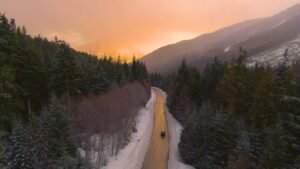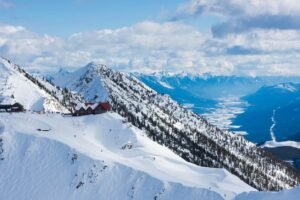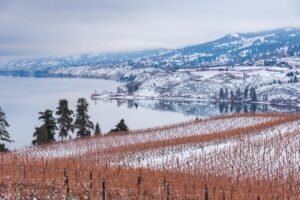Pinecone Burke Provincial Park near Maple Ridge boasts diverse hiking trails and stunning landscapes for all skill levels. Whether you’re looking for a challenging climb or a serene walk, this park has something for every outdoor enthusiast. Read on to explore the best trails and activities Pinecone Burke Provincial Park offers.
Key Takeaways
-
Pinecone Burke Provincial Park, covering 38,000 hectares, offers a diverse array of hiking trails suitable for all skill levels and features stunning landscapes and unique geological formations.
-
The park is a product of significant conservation efforts, established in 1995 through community advocacy, and recognizes the cultural heritage and traditional practices of the Indigenous peoples connected to the land.
-
Visitors are encouraged to follow safety guidelines and Leave No Trace principles to protect the park’s pristine environment and wildlife, ensuring a sustainable experience for future generations.
Discovering Pinecone Burke Provincial Park
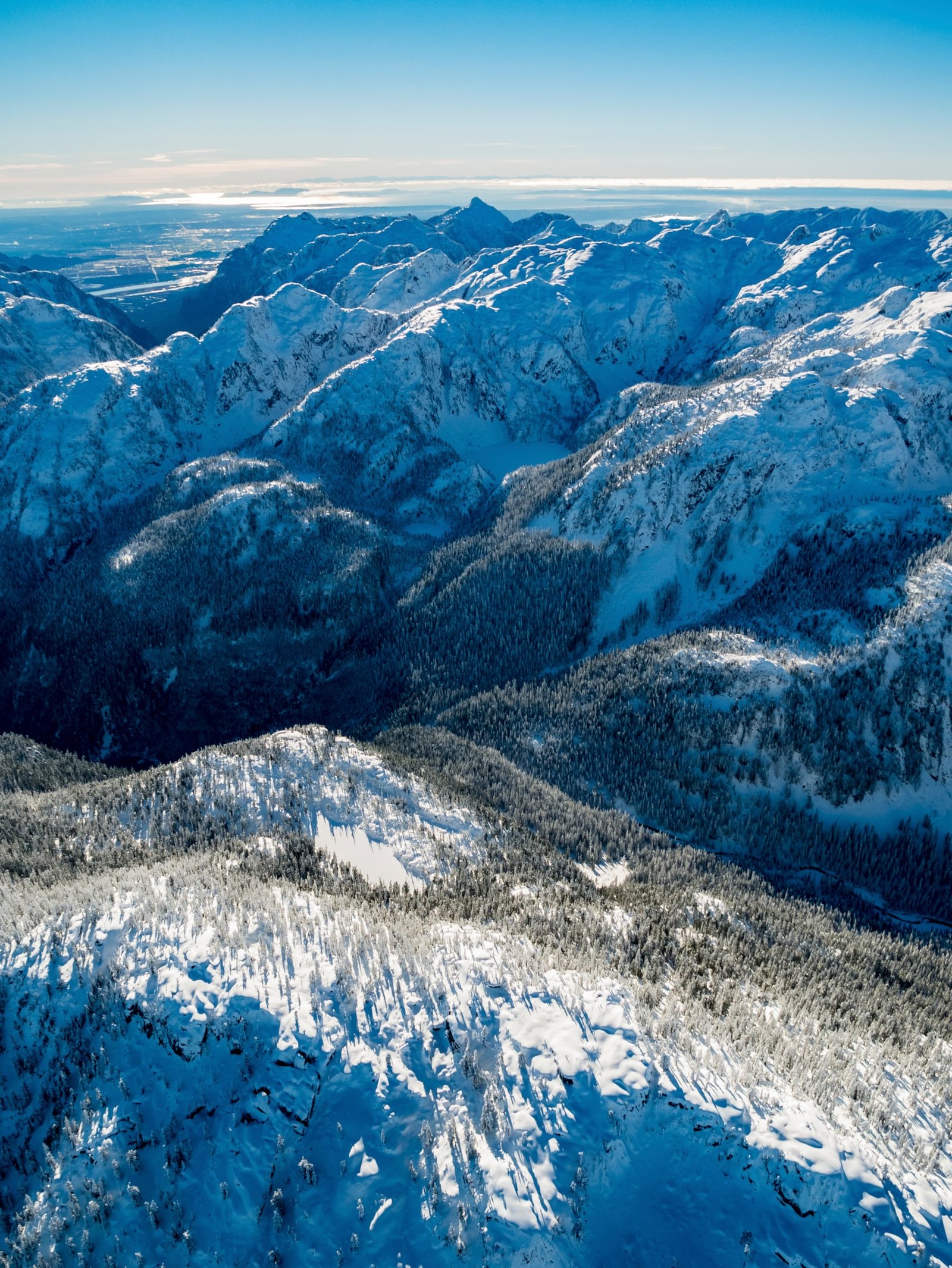
Pinecone Burke Provincial Park, established in 1995, spans approximately 38,000 hectares of unspoiled wilderness. Tucked away near Maple Ridge, this park is a haven for those seeking to explore the great outdoors. The park’s access routes include old logging roads, which are remnants of previous logging activities and now serve as crucial routes for hikers, campers, and mountain bikers.
The park’s vast expanse offers a diverse range of hiking trails, catering to both novice and experienced hikers. As you traverse the trails, you’ll encounter breathtaking landscapes, from dense forests to serene lakes, each offering a unique glimpse into the park’s natural beauty.
Location and Geography
Pinecone Burke Provincial Park is a sprawling natural haven located in British Columbia, Canada. Covering an impressive 38,000 hectares, the park stretches from the southwest corner of Garibaldi Provincial Park, west of Pitt Lake and Pitt River, to include the scenic Burke Mountain in the City of Coquitlam. This diverse geography encompasses lush forests, towering mountains, and serene waterways, including the Coquitlam River, Pitt Lake, and Widgeon Lake. Each of these natural features contributes to the park’s rich tapestry of landscapes, making it a prime destination for nature lovers and outdoor enthusiasts.
Historical Background
The history of Pinecone Burke Provincial Park is deeply intertwined with the Indigenous peoples who have called this land home for thousands of years. The Katzie First Nation, Kwikwetlem First Nation, and Stó:l First Nations have inhabited these territories for approximately 10,000 years. Their connection to the land and waterways is profound, with traditional practices such as fishing, hunting, and gathering playing a crucial role in their culture.
Before its protection in 1995, the park experienced logging and mining activities, remnants of which, like old steam donkeys and mine tunnels, can still be found today.
Establishment and Conservation Efforts
The official protection of Pinecone Burke Provincial Park in 1995 marked a significant milestone in the conservation of British Columbia’s natural heritage. Covering an area of approximately 38,000 hectares, the park was established through the dedicated efforts of various organizations, including the Friends of Burke Mountain, Burke Mountain Naturalists, and the Western Canada Wilderness Committee. These groups played a pivotal role in advocating for the park’s preservation, ensuring that its diverse ecosystems and wildlife remain protected for future generations.
The development of the park’s management plan involved extensive public consultation, incorporating input from local citizens and Indigenous communities. This collaborative approach ensures that the park’s conservation strategies reflect a balance of public and Indigenous perspectives, promoting sustainable use of the land while preserving its natural and cultural heritage.
Getting There
Pinecone Burke Provincial Park is easily accessible by car, with several entry points along the western shore of Pitt Lake and the Coquitlam River. For those who prefer a water route, the park can also be reached by boat, launching from Grant Narrows at the south end of Pitt Lake and paddling through the picturesque Widgeon Slough. The park’s proximity to the cities of Coquitlam and Maple Ridge makes it a convenient and popular destination for day trips, offering a quick escape into nature for residents and visitors alike.
Directions and Transportation
To get to Pinecone Burke Provincial Park, follow these straightforward directions:
-
From Coquitlam, head east on Coast Meridian Road towards Pitt Lake.
-
Turn left onto Apel Drive, which will transition into Victoria Drive.
-
Continue on Victoria Drive for approximately 10 kilometers, then make a left turn onto Quarry Road.
-
Follow Quarry Road for about 5 kilometers, then turn left onto the park’s access road.
-
Alternatively, visitors can access the park by boat, launching from Grant Narrows at the south end of Pitt Lake, and enjoy a scenic paddle through Widgeon Slough.
Exploring the Trails
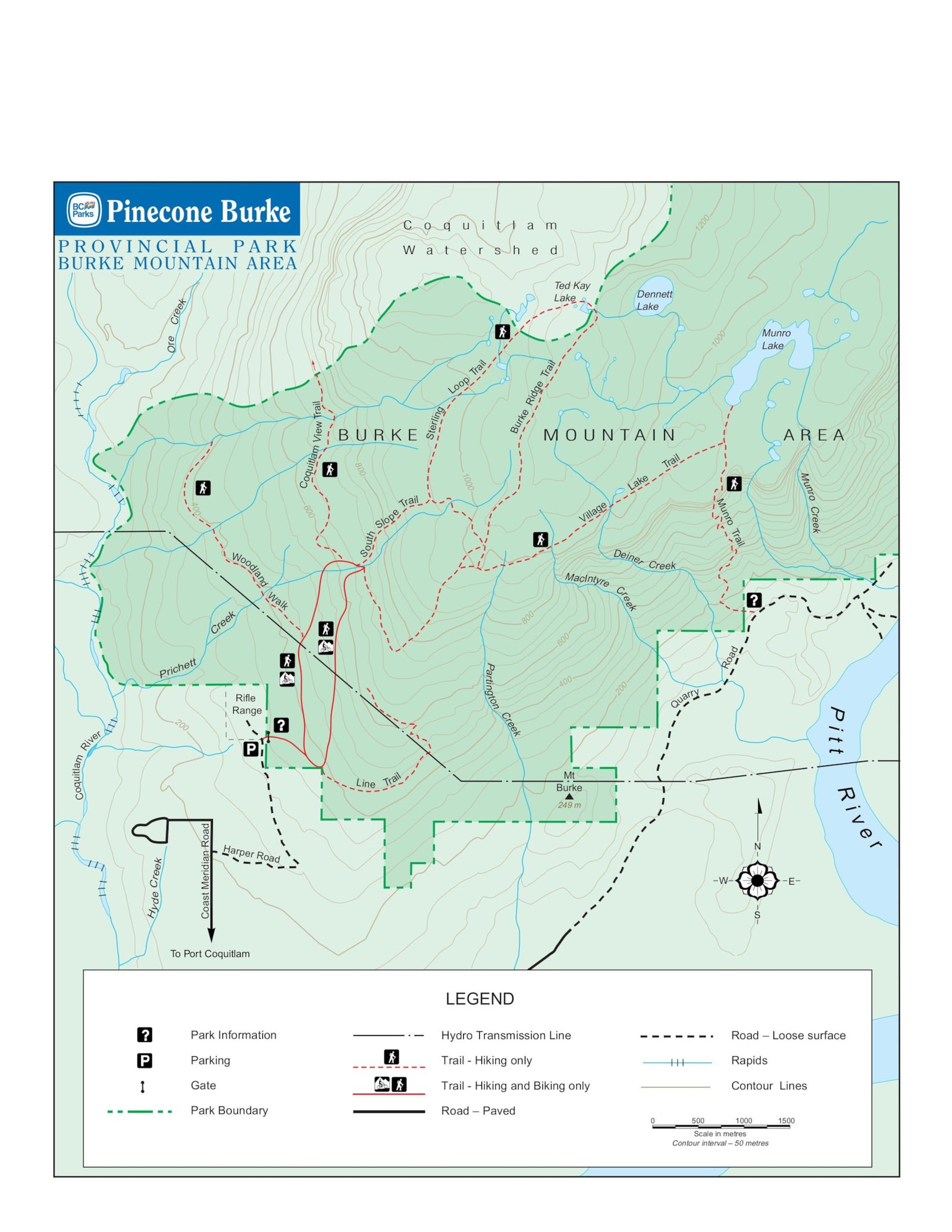
With 38 hiking trails to choose from, Pinecone Burke Provincial Park offers a diverse array of options for hikers of all skill levels. The elevation gain for these trails ranges from 0 to 2,675 meters, providing both leisurely walks and challenging hikes. One of the trails leads to a fire tower at the summit, offering stunning panoramic views of the surrounding landmarks, including the Burke Mountain wind turbine and Willoughby Gap.
Whether you’re looking for a family-friendly trail or a strenuous climb, the park’s trails promise stunning vistas and unforgettable experiences.
Overview of Trails
Pinecone Burke Provincial Park boasts an extensive network of hiking trails, catering to adventurers of all skill levels. Among these, the Blue Trail stands out, offering hikers stunning views of the surrounding mountains and lakes. The park’s trails range from easy, family-friendly paths to more challenging routes, ensuring that every visitor can find a trail that suits their preferences. Whether exploring on foot or by bike, hikers will be treated to breathtaking scenery and the chance to encounter the park’s diverse wildlife and ecosystems.
West Peak Trail
For those seeking a more challenging adventure, the West Peak Trail is a must-visit. Known for its rugged terrain, this trail tests the mettle of even the most experienced hikers. However, the effort is well worth it, as the trail rewards hikers with breathtaking panoramas that are simply awe-inspiring.
Outdoor Activities Beyond Hiking
Beyond its extensive network of hiking trails, Pinecone Burke Provincial Park offers a variety of outdoor activities that cater to diverse interests. Whether you’re a water sports enthusiast, a wildlife watcher, or a winter adventurer, the park has something for everyone.
The west shore of Pitt Lake is a popular area for recreational activities and conservation efforts, emphasizing its ecological significance and accessibility.
Canoeing and Kayaking
Canoeing and kayaking are popular activities in the park, providing a unique way to experience its pristine wilderness. Pitt Lake, with its stunning mountain views, is a prime location for paddling, while Widgeon Valley offers scenic waterways perfect for exploration.
Remember to follow safety guidelines, such as wearing life jackets and being mindful of weather conditions, to ensure a safe and enjoyable outing.
Wildlife Viewing
Wildlife viewing is another highlight of Pinecone Burke Provincial Park, thanks to its diverse ecosystems and sensitive species. Widgeon Slough, in particular, is a haven for birdwatchers, offering opportunities to observe various migratory birds in their natural habitat.
The Katzie First Nation’s traditional stewardship practices have helped maintain the health and biodiversity of these wilderness areas.
Winter Recreation
Winter transforms the park into a playground for snowshoeing and backcountry skiing enthusiasts. The less crowded trails during winter months provide a peaceful and exhilarating experience for those willing to brave the cold.
Whether you’re trekking through the snow-covered forests or skiing down the slopes, winter recreation at Pinecone Burke offers a unique way to enjoy the park’s beauty.
Camping Options and Facilities
Camping at Pinecone Burke Provincial Park is an adventure in itself, with various options to suit different preferences. From wilderness camping to group sites and marine-accessible locations, the park offers a range of accommodations for campers looking to immerse themselves in nature.
Wilderness Camping
Wilderness camping is available year-round on Burke Mountain, providing a true back-to-nature experience. With no facilities provided, campers must be self-sufficient and adhere to park rules, including the prohibition of campfires.
East Burke is known for its recreational activities and provides additional access points for exploring the park’s wilderness.
This type of camping allows you to fully experience the park’s raw beauty, from its rugged terrain to its tranquil forests.
Group Campsites
Group campsites at Pinecone Burke operate on a first-come, first-served basis, with no fees charged for camping. These sites are ideal for family gatherings or group outings, but it’s advisable to arrive early to secure a spot due to their popularity.
Marine-Accessible Camping
Marine-accessible camping offers a unique experience for those arriving by boat or kayak, with sites available at Widgeon Creek and along Pitt Lake. These sites are accessible year-round, providing a remote and tranquil setting for campers.
The journey to these sites, often involving a paddle through scenic waterways, adds to the adventure.
Facilities and Amenities
Pinecone Burke Provincial Park is well-equipped to enhance your outdoor experience with a variety of facilities and amenities, including:
-
Picnic Areas and Day-Use Sites: Perfect for a relaxing break amidst nature.
-
Camping Facilities: Options include backcountry and marine-accessible campsites, catering to different camping preferences.
-
Hiking and Bike Trails: A network of trails that offer scenic views and varying levels of difficulty.
-
Scenic Views and Wildlife Viewing: Opportunities to observe the park’s rich biodiversity.
-
Access to Pitt Lake and Widgeon Lake: Ideal for boating and fishing enthusiasts.
-
Information and Educational Programs: Provided through BC Parks to enhance your visit with valuable insights.
Please note that the park’s facilities and amenities are subject to change, so it’s advisable to check with BC Parks for the most up-to-date information before planning your visit.
Visitor Guidelines and Safety Tips
To ensure a safe and enjoyable visit, it’s important to follow the park’s guidelines and safety tips. Pinecone Burke Provincial Park is a wilderness area, and visitors must be prepared for the challenges that come with it.
Familiarize yourself with the rules and be mindful of your impact on the environment.
Safety Precautions
Safety is paramount when exploring the park. Visitors are advised to use the food cache at Widgeon Creek campsite to avoid bear encounters and carry bear spray. Sticking to designated trails helps protect the ecosystem and reduces the risk of getting lost.
During winter, be prepared for sudden weather changes and check avalanche reports before heading out.
Leave No Trace Principles
Following Leave No Trace principles is crucial to maintaining the park’s pristine environment. All visitors must pack out their waste, as there are no trash facilities in the park. This includes food scraps and personal items.
Additionally, dogs should be kept on a leash, and pet waste must be disposed of properly.
Indigenous Connections and Cultural Significance
The cultural significance of Pinecone Burke Provincial Park to the Indigenous peoples, particularly the Katzie First Nation, is profound. Their traditional principles and practices continue to guide the stewardship of the land, ensuring its preservation for future generations.
Traditional Practices
The Katzie First Nation’s traditional practices, such as hunting and gathering, are integral to their cultural heritage. These activities have been carried out within the park for centuries, highlighting the deep connection between the Katzie people and the land.
Collaborative Management
The management of Pinecone Burke Provincial Park is a collaborative effort involving BC Parks, the city of Coquitlam, and the Katzie First Nation. Established in 2014, the management plan integrates Indigenous knowledge with modern conservation practices, ensuring the park’s ecosystems are preserved in line with cultural values.
Summary
In summary, Pinecone Burke Provincial Park offers a rich tapestry of natural beauty, outdoor activities, and cultural heritage. From its diverse hiking trails and camping options to its significance for the Katzie First Nation, the park provides a unique and enriching experience for all visitors. Embark on your adventure to Pinecone Burke and discover the wonders that await.
Frequently Asked Questions
What are the best hiking trails in Pinecone Burke Provincial Park?
The best hiking trails in Pinecone Burke Provincial Park are the Blue Trail, Red Trail, and West Peak Trail, each providing distinctive scenic views and a range of difficulty levels. These options cater to different hiking preferences, ensuring an enjoyable experience for all visitors.
Is camping allowed in Pinecone Burke Provincial Park?
Yes, camping is permitted in Pinecone Burke Provincial Park, with options for wilderness camping, group campsites, and marine-accessible sites.
What wildlife can be seen in Pinecone Burke Provincial Park?
Pinecone Burke Provincial Park features diverse ecosystems that support an array of wildlife, including migratory birds in Widgeon Slough and other sensitive species.
Are there any winter activities available in the park?
Yes, the park offers winter activities including snowshoeing and backcountry skiing, particularly in the Burke Mountain area.
How can I ensure a safe visit to Pinecone Burke Provincial Park?
To ensure a safe visit to Pinecone Burke Provincial Park, it is essential to follow the park’s guidelines, utilize bear spray, stick to designated trails, and adhere to Leave No Trace principles. These measures will help protect both you and the environment during your stay.




